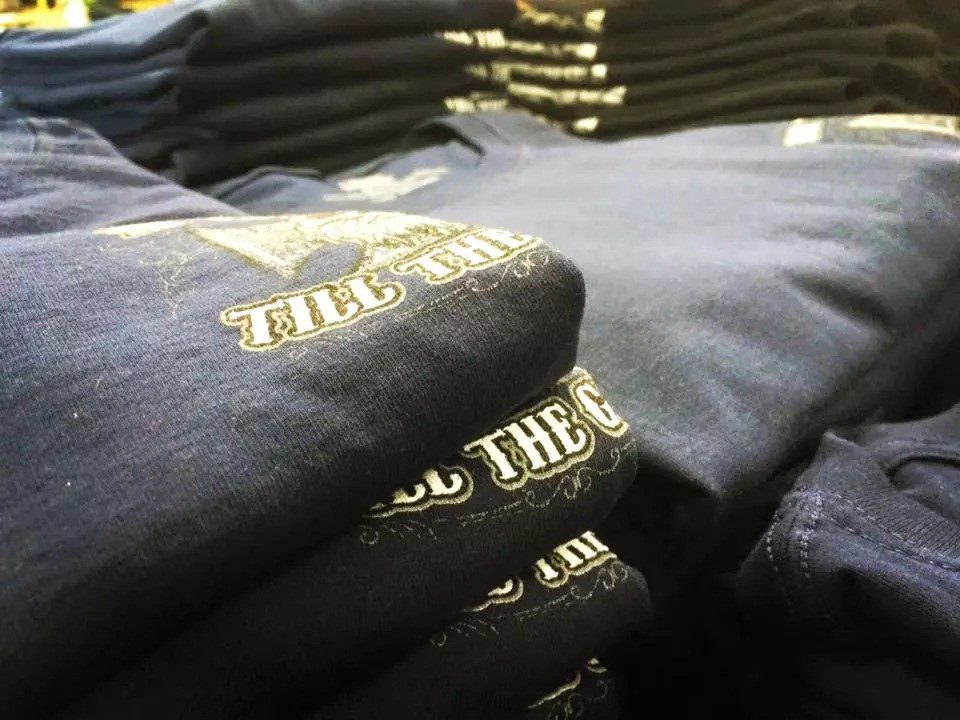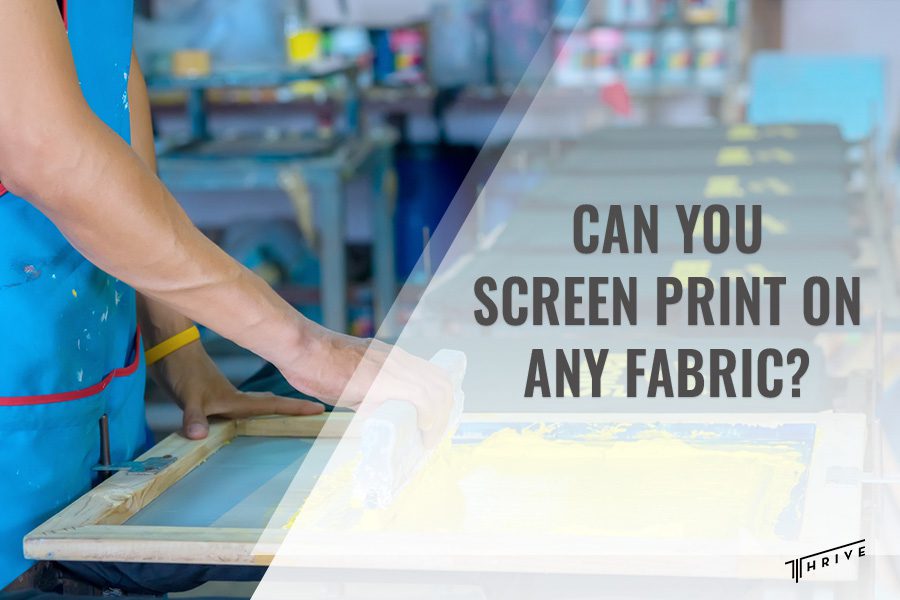Screen printing is a technique that has been around for centuries and has a versatile use in contemporary printing. While it is an excellent method for achieving vibrant designs, many people are interested in whether they can print on various textiles and, if not, which fabric is best for screen printing. So, can you screen print on any fabric? Let’s find out!
This article will offer an in-depth examination of the compatibility between different fabrics and the screen printing technique.
Can You Screen Print on Any Fabric?
Although most would argue that with today’s techniques and inks, one can achieve perfect results no matter the fabric they use in the process, others would agree to disagree. From our experience, some fabrics show better printing results than others.
This is why we believe that being familiar with the main characteristics of screen printing may help customers make an appropriate decision. We also believe that considering the customer needs is a top priority, which is why we offer contract screen printing services to smaller businesses unable to handle larger screen printing loads.

Why is choosing the right material important?
While, as we mentioned earlier, screen printing can be adequate for various fabrics, customers should also keep in mind that the results will vary per fabric. Each fabric comes with unique properties and considerations. The fabric’s qualities dictate ink absorption, color vibrancy, and overall design durability.
Let’s have a look at the best fabrics for screen printing and the fabrics to avoid when using this particular technique.
Best Fabrics for Screen Printing
As we said, some fabrics are more commonly used to make the printing process more successful. Some of the best textile fabrics that we find most suitable for this printing method include the following:
Cotton fabrics
Cotton is one of the most popular choices in fabric screen printing. Being multifilament, cotton absorbs color easily, which is why it is widely considered one of the best surfaces for screen printing. However, there are some important considerations that we always keep in mind when working with cotton.
One of the most important factors that dictate print quality in cotton designs is the type of ink involved. Water-based inks tend to work best for cotton blends as they have a higher thickness compared to other ink types. We also like to use a higher mesh count when screen printing on cotton, as this can ensure the ink spreads evenly.
Pre-shrinking cotton is another popular practice among textile printing manufacturers. This is usually done to avoid shrinking during the screen printing process.
Silk fabrics
Natural fabrics are deemed more suitable for screen printing than man-made fabrics. Organic fabrics absorb ink much better than synthetic materials, meaning screen printing can be an ideal choice when working with silk.
Its smooth surface makes silk a great choice for screen printing, meaning there’s a lesser risk of printing an uneven design. This material is also highly stain-resistant, making it a desirable choice, but it’s way more expensive than other materials. However, silk also comes with some common challenges, one such being preventing the material from moving.
Fine silk is the most difficult to screen print as it is extremely delicate. In such scenarios, we like to pretreat the garment to prevent damage and ensure the ink holds well. We find lower mesh counts to work best for delicate materials such as fine silk.
One downside that you may encounter with screen printing on silks is that the material doesn’t absorb colors well leaving a muted pastel look of the print.
Wool fabrics
Fabrics that contain a high count of wool or are 100% made of wool are not the best choice for screen printing beginners. However, wool-cotton and wool-silk blends are excellent substrates. Generally, the higher the cotton or silk count in these blends, the better. While wool absorbs color easily, it’s difficult to ensure the ink is absorbed evenly into every inch of the wool material.
When screen printing on thicker fibers such as wool, we prefer simpler designs. In general, we prefer more complex designs for smooth surfaces.
Fabrics to Avoid in Screen Printing
While screen printing is applicable in various fabrics and materials, some are better to avoid. For instance, clothes blends made from a high count of synthetic materials can be tricky to manage, especially if you lack prior screen printing experience.
Some more demanding synthetic materials we find unsuitable for screen printing include acrylic, rayon, and acetate. These are especially heat-sensitive and may easily shrink when exposed to heat.
It’s worth mentioning that athletic shirts made from synthetic fabrics can be screen printed. But they must be tended with extra care; when printing such materials, one of the most detrimental factors is the exact shirt’s construction.
Some of the synthetic materials to steer clear of in screen printing include:
- Novelty fabrics such as faux fur are unsuitable as they tend to be extremely textured.
- Clothes made from 100% spandex or lycra are difficult to manage as they are sensitive to heat, and they usually require special inks.
- Polyester is inadequate for this type of printing as it doesn’t absorb color.

Conclusion
While many would argue that the answer to whether can you screen print on any fabric is technically yes, we’d like to claim otherwise. It’s worth emphasizing that some fabrics are more suitable than others as they absorb the ink better, bringing better final results. While the fabrics that are not as great as a choice might offer some quality in print, for us, only the fabrics that bring an optimal result make an adequate choice.
When exploring textiles suitable for screen printing, we find natural material blends such as cotton, silk, and wool make excellent choices. However, these, too, come with distinct considerations. Overall, when screen printing is involved, some fabrics are best avoided. These mainly include synthetic materials that are especially sensitive to heat and prone to shrinking.

Robert Fisher is the founder and CEO of Thrive Screen Printing and brings extensive experience in the screen printing and fulfillment industry.


